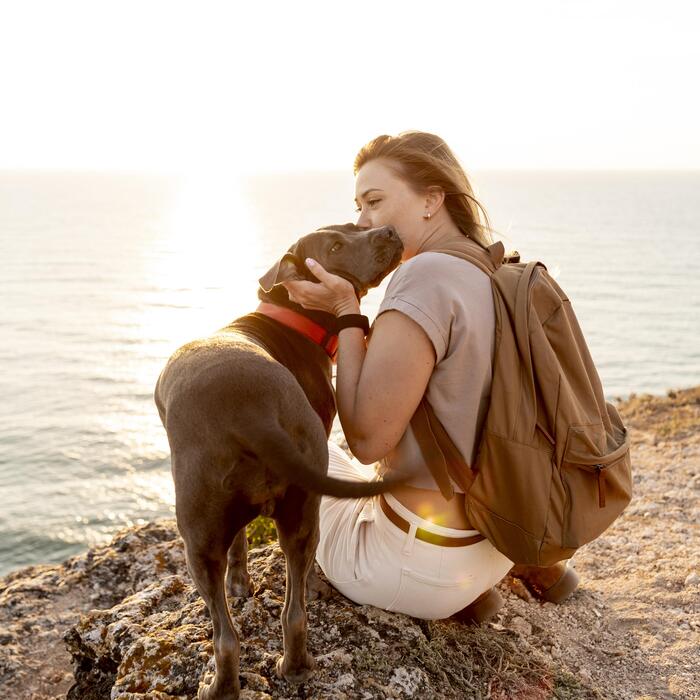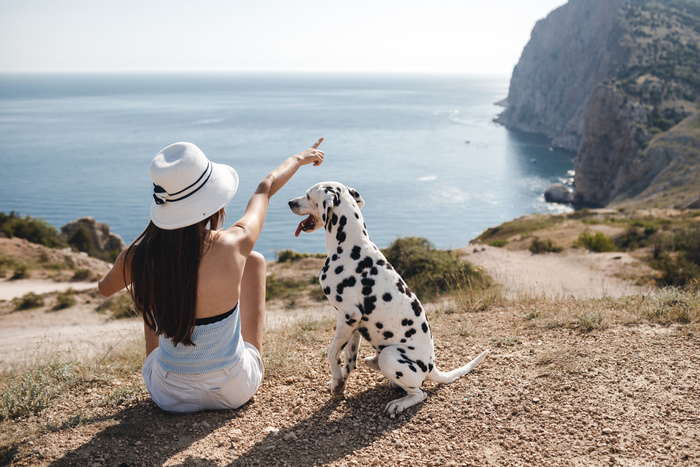2023-03-06
Planning your vacation is usually associated with mixed feelings. We usually feel joy and even euphoria because of the pleasant time we are going to spend away from the hectic pace of everyday life, but also some stress due to the organizational aspect of vacation planning. Speaking of organization, the process can become even more complicated for those of us who have a pet, especially a dog. We have to decide whether to take our beloved paw family member with us or look for options on who will take care of them while we are on vacation. Since both owners and our pets find it difficult to be separated from each other, many of us decide to bring our dogs and cats with us.
Even though this might sound like the easier or at least the more pleasant thing to do, this decision is also accompanied by factors that should be considered. If you relate to today’s topic, you may want to keep reading as you will find helpful tips on how to have a pleasant and stress-free vacation with your pet.

First, you should carefully consider all the options and where your paw friend will feel better. Avoid taking your pet with you, if you know that he/she will barely endure the travel and will feel stressed and anxious when away from home. Make their well-being your priority and do not let your emotions take over you.
Dogs are not all the same, and they have their own temperament and personality. While some dogs enjoy going on long rides, others are likely to feel stressed. The following signs imply that your paw friend is not feeling comfortable going on a trip:
-Pacing;
-Hiding;
-Tucking his/her tail behind his/her back legs;
-Putting his/her ears back;
-Biting;
-Trembling.
You should watch his/her body language and behavior to recognize any deviations that may occur.
This is the first step towards minimizing stress for your pet during vacation time. Make sure that you have chosen a location, where your pet will feel as comfortable as possible. This could mean a place in the countryside where there will be enough space for him/her to walk, run and exercise. You should also make sure that the chosen location is pet-friendly and that there won’t be problems bringing your dog. Too busy and crowded areas might not be a good choice.

To ensure that your dog will travel safely, you should consider putting him/her in a crate during the travel. You should also make sure that the crate is the right size for him/her so he/she feels comfortable during the trip. It should be large enough so he/she can freely change his/her position and have enough space to lie down. A crate is a good option for dogs of small- and mid-sized breeds.
Once you choose the best crate for your pet, you should gradually introduce it to him/her. The idea of crate training is to help dogs develop a positive attitude toward the crate and pair it with a positive experience, namely a place to rest, relax and eat. You should place the crate next to your dog’s spot at home with the door open. Let your beloved paw friend sniff around, nudge at the crate, or otherwise explore it. You should reward him/her when he/she shows interest in it. In order to encourage your dog’s interest, you can put treats inside or occasionally throw treats inside during playtime. By putting a cozy item such as a warm towel or a blanket as well as your doggy’s favorite toys inside the crate, you will create a positive experience for him/her. Hence, he/she is likely to start associating the crate with something pleasant and will be more tolerant of it.
Once you notice consistency in your dog’s interest in the crate, you can try to close its door for a short time. Reward him/her immediately if he/she remains calm. If your dog seems to need more time to adapt to being in a crate, do not rush things, but take a step back and let him/her adapt to it first. Gradually you can start increasing the time when the door is closed. At some point, you can also pick up the crate and put it in your car. Watch your dog’s reaction. Feed him/her treats for showing the wanted behavior and remaining relaxed. Increase the time spent in the car step by step.
Do not forget to prepare all your paw friend’s supplies, especially water, and food. Take some breaks during the trip to feed your doggy and let him/her drink water. This is especially important during the hot season. You will also need your dog’s leash, collar, or other training gear he/she may wear, his/her toys, poop bags, as well as a warm blanket/towel. If your vacation takes longer, you may need to also take your dog’s shampoo and brush. If you have a dog of a small breed, and you are going on a trip during the cold season, you should take some clothing to protect him/her from the low temperatures.
Taking small breaks for potty time and short walks is essential for your dog’s comfort during the trip. Also, the calmer and safer you drive, the better your pet and the other passenger will feel.

You should follow this tip at all times. Temperatures can reach extremely high levels in the summer, even during cooler days. It is essential that you not leave your pet without supervision and keep the window slightly open so fresh air can come in. Please remember, that on hot days it may take only 10–15 minutes for a pet to get a heatstroke. There is also another aspect that should be considered-your dog/cat can easily become a victim of theft if left alone.
You should take time to keep your dog physically and mentally fit both during the travel, and after you have already reached your destination. When dogs spend an excessive amount of energy, they feel much calmer and are less likely to exhibit unwanted behaviors.
Whether you will take your pet with you or let another person take care of him/her during your absence, your pet’s daily routine should be followed as much as possible. This will bring a feeling of predictability and safety to him/her.
By exploring the area around your vacation location, you can find out which places are suitable for your dog and which are not. For example, switchback trails, crowded places, or places with potentially dangerous objects for your dog should be avoided.
We are not much into giving pets medication without a reasonable cause being present. However, if your pet is not likely to endure traveling in a car (or whatever vehicle you will be traveling on) you should consult a veterinarian. They are likely to prescribe anti-nausea medication, which will help your paw friend if he/she deals with high levels of travel anxiety.